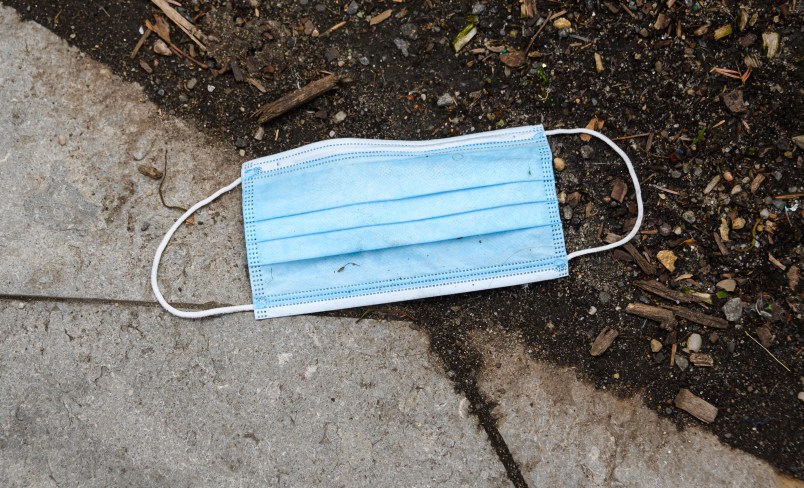The current vaccines may not be enough to bring about the end of COVID-19. In fact, the virus could be with us for years to come.
Increasingly, public health authorities and drug companies are indicating that mutating strains and fading vaccine efficiency could mean perpetual campaigns to keep the population immune, including the need to organize regular booster shots.
The virus would morph from being an acute, albeit lengthy, crisis to a fact of life.
That’s not to say we’d have to live with the periodic lockdowns or public health measures on the national scale that we’ve seen. But it would mean an ongoing effort to confront COVID-19. Governments would be faced with the prospect of building long-term vaccine and PPE manufacturing capabilities and of organizing regular vaccination drives that could make the annual flu season look puny by comparison.
That fear has been exacerbated by new strains of the virus emerging across the globe. Some of the vaccines currently in mass production have been shown to be less effective against the South African variant, for example, while a mutation in that strain of the deadly virus appears to affect directly the ability of vaccines and antibodies to respond.
Pfizer announced on Tuesday that it was preparing for a “potentially durable, long-lasting need for COVID-19 vaccines,” telling investors that there would likely be a “need to boost regularly” to maintain its mRNA vaccine’s immune response.

And the CEO of Moderna, the other COVID-19 mRNA vaccine manufacturer, said last month that the world will have to live with COVID-19 “forever.” Both companies, of course, stand to reap financial rewards from eternal demand for COVID-19 vaccines.
The Biden administration, meanwhile, has suggested that part of its effort to build a deeper public health infrastructure will be directed at the prospect of viral mutations turning COVID-19 into a much longer-lasting crisis.
Four to five years?
President Biden’s American Rescue Plan includes two provisions squarely targeted at the potential for new variants that could wipe out or diminish the effectiveness of the shots currently in production.
One proposal would send $30 billion to replenish the Disaster Relief Fund, a FEMA program for reimbursing state governments for their COVID-19 response and for purchasing supplies like PPE.
The Biden plan also envisions $10 billion for the Defense Production Act’s Title III provision to “expand domestic manufacturing for pandemic supplies.”
The law allows the government to pump money in the form of loans into strategic industries “to help expand domestic production capacity for critical commodities,” Dave Kaufman, a former FEMA official who worked on DPA issues and is now at the CNAS think tank, told TPM last week.
The policies reflect a growing fear that the COVID-19 crisis will not be an acute emergency washed away by one massive wave of vaccinations, but could instead be an evolving, long-term threat.
“A lot of people, me included, thought last year that if we got an effective vaccine, it would be six months and we’d be over it,” Craig Fugate, a former FEMA administrator under President Obama who served on a Biden transition review team, told TPM. “I’m increasingly thinking, this may be four to five years of getting it under control, new outbreaks, new variations, and having to keep people vaccinated.”
One possible scenario is that mass vaccinations will bring the current phase of the pandemic under control before mutations in the virus allow it to spread in spite of the immunity created by the current round of shots. Another possibility is that the immunity conferred by the vaccines in production erodes enough over time that the virus can continue to spread.
Either possibility would require huge investments in vaccine manufacturing capabilities, which are already hamstrung in part by the delicacy of the production process. The DPA could prove useful in meeting that demand.
The prospect of vaccines being needed over an ultra long-term timeframe raises separate questions around cost; the government is purchasing COVID-19 vaccines directly at the moment. But the flu vaccine only became cost-free to many after the Affordable Care Act mandated that insurers cover the shot.
Going viral
All this doesn’t mean that the virus will forever be a deadly threat. One study found that it could morph into an illness with the severity of the common cold while still circulating throughout the human population.
Paul Offit, a vaccine developer and professor at Children’s Hospital in Philadelphia who serves on an FDA vaccine advisory committee, told TPM that perpetual vaccinations would be needed in two cases: one where the “virus mutates so much from one year to the next that immunization doesn’t protect you.”
Offit noted that that’s a separate issue from the one that Pfizer raised, which is whether the two initial shots are enough to maintain immunity over a longer time-frame.
“That’s where you have fading immunity,” he said.
In either case, it would mean that the COVID-19 problem could have no definite end.
“With most pandemics, theres not really a bright line you cross and it’s over,” Fugate said.
Offit said that the coronavirus is relatively young in terms of its existence in the human population. It spread across the world after leaving Wuhan, he said, in the form of a new variant.
“You should start to worry when you see people who were fully vaccinated with the mRNA units who, despite that, are still getting hospitalized with the variant strain,” Offit said. “That’s when you know your vaccine has failed.”



